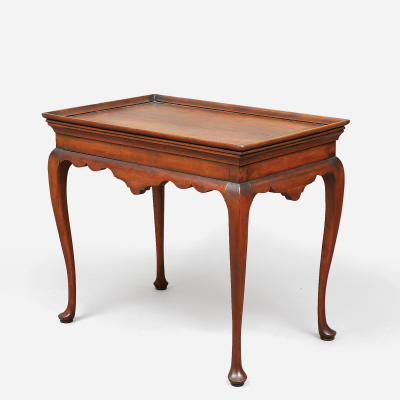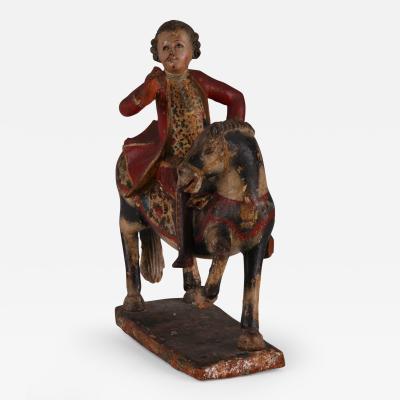Interior Designer Ralph Harvard
 |
 | |
Ralph Harvard |
Last August, Elle Shushan, a dealer in antique portrait miniatures, opened an envelope to find a swatch of damask. The letter was from Ralph O. Harvard, III; the swatch, a part of Harvard’s unfurling design for her booth at the 2002 Winter Antiques Show in New York. “There isn’t a better historical designer,” says Shushan, who asked Harvard to evoke a room in London’s Ham House as a backdrop for her East Side House display.
“Goodness knows, I never wanted to be an interior decorator,” demurs Harvard, who trained as an architect and from his earliest years envisioned life as a crusader for old houses. His reluctance notwithstanding, he is a leading exponent of traditional good looks in home design, with an extensive client list to prove it.
Having grown up in Richmond, Virginia, Harvard now lives in New York with his two young children and his wife, Clifford, who is the gallery manager of Leigh Keno American Antiques, in a townhouse designed by Colonial Revival architect Ogden Codman (1863–1951). The Harvards met, appropriately, at the Winter Antiques Show in 1990, after Sumpter Priddy, III, an Alexandria, Virginia, antiques dealer, and Luke Beckerdite, the Virginia-based editor of the scholarly journal American Furniture, engineered the encounter.
 |  | |
| Left: At the historic Rideout Tenement in Annapolis, Harvard marbled the fireplace with a No. 2 pencil. He chose his favorite colors—bold blue and white for upholstery and khaki for the walls—to contrast with paintings by Milton Avery (1885–1965) and traditional mahogany furniture. The bird finial on the chest-on-chest is a lighthearted touch. Courtesy of Ralph Harvard; photography by Celia Pearson. Right: The living room of this New York City apartment mingles American, European, and Asian antiques. Harvard upholstered the sofa and easy chair, both from Philadelphia, in the eighteenth-century manner, re-creating the application of fringe described in the accounts of General John Cadwalader (1742–1786) with the London firm Rushton and Beachcroft and the Philadelphia upholsterers John Webster and Plunket Fleeson (1712–1791). At rear, Chinese export armchairs in the Philadelphia style flank a circa 1730 Boston desk and bookcase. An exceptional Persian Ispahan carpet covers the floor. Courtesy of Ralph Harvard; photography by Keith Scott Morton. | ||
 | |
| A slab table, thought to be from Virginia, and a shell-carved Maryland side chair mix with an English portrait and caned chair in this Annapolis, Maryland, home. The wide-board pine floors retain their original finish. The plastered walls and painted trim have been restored to their original 1780s appearance. Courtesy of Ralph Harvard; photography by Celia Pearson. |
“Ralph has been in and out of houses since he was a kid—living them, breathing them, loving them. He’s got the best understanding of early architecture of any designer,” says Priddy, who studied architecture with Harvard at the University of Virginia in the mid-1970s. “I know every early-eighteenth-century building in the South and all the good ones in the North,” confesses Harvard, whose expertise is such that for the past three years, he has led a tour of Virginia’s Tidewater country in conjunction with Colonial Williamsburg’s annual Antiques Forum.
Harvard’s interests were already well formed at age 16, when he began documenting historic homes for the Virginia Landmarks Commission. At 19, he dug shards at Carter’s Grove Plantation as part of the archaeological search for dependencies and support buildings on the eighteenth-century plantation. He later spent summers restoring buildings for the National Park Service in Yorktown, Virginia, a small eighteenth-century village. He refined his style with further studies in Italy, England, Nantucket, and at Harvard’s Graduate School of Design. While teaching at the College of Art and Design in Savannah, Georgia, he earned a degree in interior design.
“I felt like life was swirling past me,” recalls Harvard, who left Savannah for the design world’s epicenter, Manhattan, in 1981. The Virginian cut his teeth working for Mario Buatta, a society decorator and the Winter Antiques Show’s past chairman. Harvard went on to form a ten-year partnership, R. Brooke Ltd., with designer Hethea Nye.
Housed in a narrow brownstone opposite the New York School of Interior Design, the offices of Ralph Harvard Incorporated (established in 1996) are much like the man himself: cozy, understated, steeped in the past, appealingly worn, with a love of emphatic form offset by a delicate touch here and there. Swatch books mount up in the corners of a sepia-tinged conference room, which itself resembles a yellowed page torn from one of the many period references in Harvard’s library—a trove so exceptional that historian Pauline C. Metcalf drew from it while researching Susan Higginson Nash (1893–1971), Colonial Williamsburg’s first decorator, for a lecture given at the Antiques Forum in 2000.
 |  | |
| Left: In the Simon Retallick house in Annapolis, Maryland, Harvard restored the original Prussian blue paint to the antique mantel, copied from Batty Langley’s Builder’s Director of 1751. The designer chose lavender, a period color, for the silk festoon curtain. The house was furnished from the owner’s collection of American and Chinese antiques. Courtesy of Ralph Harvard; photography by Celia Pearson. Right: To restore character to a Chevy Chase, Maryland, farmhouse that had been extensively remodeled, Harvard installed antique Zuber wallpaper with American scenic views such as Niagara Falls, shown here. The furniture is Baltimore-made and dates to the early nineteenth century. Courtesy of Ralph Harvard; photography by Celia Pearson. | ||
Not limited to period style, Harvard is careful to separate his personal taste from his professional judgment. “I like Virginia furniture that was made in the 1740s. There is not a big market for that. I like bright blue. Most people don’t, certainly not brown-eyed people. They usually prefer warm earthtones,” he says. But even when not working with historic settings, Harvard’s interiors project certain values: They are detailed but not cluttered, restrained but unafraid of color, with a love of fine proportions and sharp silhouettes.
To thumb through Harvard’s portfolio is to journey from Southampton to Natchez, from starkly primitive farmhouses to plush Park Avenue apartments. Of all the projects he has completed, however, none more clearly reveals his passion for historic settings than the refurbished home of metalsmith Simon Retallick (1752–1824) that was built in Annapolis, Maryland, around 1780.
 | |
| For a New York client who collects photography and American furniture, Harvard created an interior that is both old and new. “We wanted something clean and quiet, to act as a backdrop,” he says. The chairs were carefully upholstered with Georgian damask from Scalamandre in eighteenth-century fashion. Courtesy of Ralph Harvard; photography by Celia Pearson. |
The job, which won Harvard an award from the National Trust for Historic Preservation, called upon the skills that put this decorator in a class by himself. Harvard scraped paint and ordered chemical analyses to determine the interior’s original colors, restoring the parlor’s exceptional mantel to its original Prussian blue, drawn from a Batty Langley (1696–1751) design. For the sitting room, Harvard found several lengths of a faded French wallpaper in Scalamandre’s archives and had it reproduced exactly, wear and all. (Called “Harvard Yard,” it is available from the designer.) And when it came to plastering the walls, Harvard insisted on an early American recipe, one that called for fourteen tons of sand, mixed and applied wet in three coats, with a final coat of pure plaster of Paris.
“When we saved the Simon Retallick house, we brought the street back to life. It was a good thing for Annapolis,” says Harvard. As evidenced by his recent appointment to the board for the Decorative Arts Trust, Harvard is also a good thing for historic design and those who love it.
Laura Beach of Mystic, Connecticut, writes about antiques. A contributing editor at Antiques and the Arts Weekly, her work also appears in Art & Auction, Country Home, and the Antiques Trade Gazette of London.
This article was originally published in Antiques & Fine Art magazine. Fully digitized versions are available at www.afamag.com. AFA is affiliated with Incollect.com.
 |































